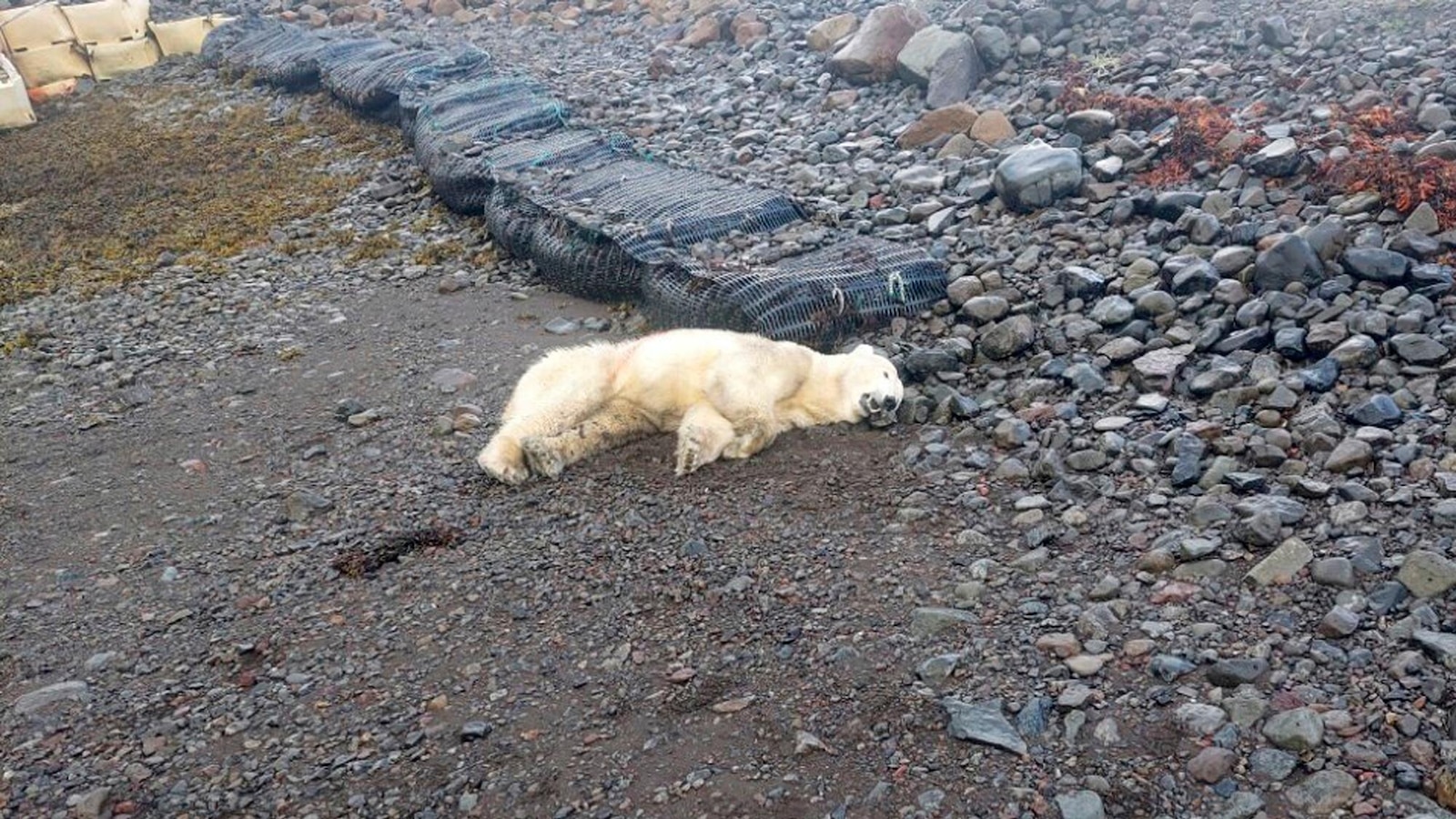
LONDON — A rare polar bear that was spotted outside a cottage in a remote village in Iceland was shot by police after being considered a threat, authorities said Friday.
The bear was killed Thursday afternoon in the northwest of Iceland after police consulted the Environment Agency, which declined to have the animal relocated, Westfjords Police Chief Helgi Jensson told The Associated Press.
“It’s not something we like to do,” Jensson said. “In this case, as you can see in the picture, the bear was very close to a summer house. There was an old woman in there.”
The owner, who was alone, was frightened and locked herself upstairs as the bear rummaged through her garbage, Jensson said. She contacted her daughter in Reykjavik, the nation’s capital, by satellite link, and called for help.
“She stayed there,” Jensson said, adding that other summer residents in the area had gone home. “She knew the danger.”
Polar bears are not native to Iceland but occasionally come ashore after traveling on ice floes from Greenland, according to Anna Sveinsdóttir, director of scientific collections at the Icelandic Institute of Natural History. Many icebergs have been spotted off the north coast in the last few weeks.
Although attacks by polar bears on humans are extremely rare, a study in Wildlife Society Bulletin in 2017 said that the loss of sea ice from global warming has led more hungry bears to land, putting them in greater chance of conflicts with humans and leading to a greater risk to both.
Of 73 documented attacks by polar bears from 1870 to 2014 in Canada, Greenland, Norway, Russia, and United States — which killed 20 people and injured 63 — 15 occurred in the final five years of that period.
The bear shot on Thursday was the first one seen in the country since 2016. Sightings are relatively rare with only 600 recorded in Iceland since the ninth century.
While the bears are a protected species in Iceland and it’s forbidden to kill one at sea, they can be killed if they pose a threat to humans or livestock.
After two bears arrived in 2008, a debate over killing the threatened species led the environment minister to appoint a task force to study the issue, the institute said. The task force concluded that killing vagrant bears was the most appropriate response.
The group said the nonnative species posed a threat to people and animals, and the cost of returning them to Greenland, about 300 kilometers (180 miles) away, was exorbitant. It also found there was a healthy bear population in east Greenland where any bear was likely to have come from.
The young bear, which weighed between 150 and 200 kilograms (300 to 400 pounds), will be taken to the institute to study. Scientists took samples from the bear Friday.
They will be checking for parasites and infections and evaluating its physical condition, such as the health of its organs and percentage of body fat, Sveinsdóttir said. The pelt and skull may be preserved for the institute’s collection.
A Coast Guard helicopter surveyed the area where the bear was found to look for others but didn’t find any, police said.
After the shot bear was taken away, the woman who reported it decided to stay longer in the village, Jensson said
In a rare and tragic incident, police in Iceland were forced to shoot a polar bear that had appeared on the shores of the island nation. The polar bear, a species not native to Iceland, had likely wandered far from its natural habitat in search of food or due to changing environmental conditions.
The sighting of a polar bear in Iceland is a highly unusual occurrence, as the animals are typically found in the Arctic regions of the world. The appearance of the bear on Icelandic shores caused concern among local residents and authorities, as polar bears can be dangerous predators and pose a threat to human safety.
In response to the presence of the polar bear, police were called to the scene to assess the situation and ensure the safety of the public. After determining that the bear posed a significant risk to human life, authorities made the difficult decision to euthanize the animal.
The decision to shoot the polar bear was not taken lightly, as conservationists and animal rights activists have raised concerns about the killing of endangered species. However, in this case, authorities felt that they had no other choice but to take action to protect the safety of the public.
The incident serves as a stark reminder of the impact of climate change on wildlife populations around the world. As Arctic ice continues to melt at an alarming rate, polar bears are being forced to travel greater distances in search of food, leading them into unfamiliar territories where they may come into contact with humans.
While the shooting of the polar bear in Iceland is a tragic event, it also highlights the need for increased awareness and conservation efforts to protect vulnerable species in a changing world. As temperatures continue to rise and habitats disappear, it is crucial that we take action to preserve the natural world and ensure the survival of species like the polar bear for future generations.


